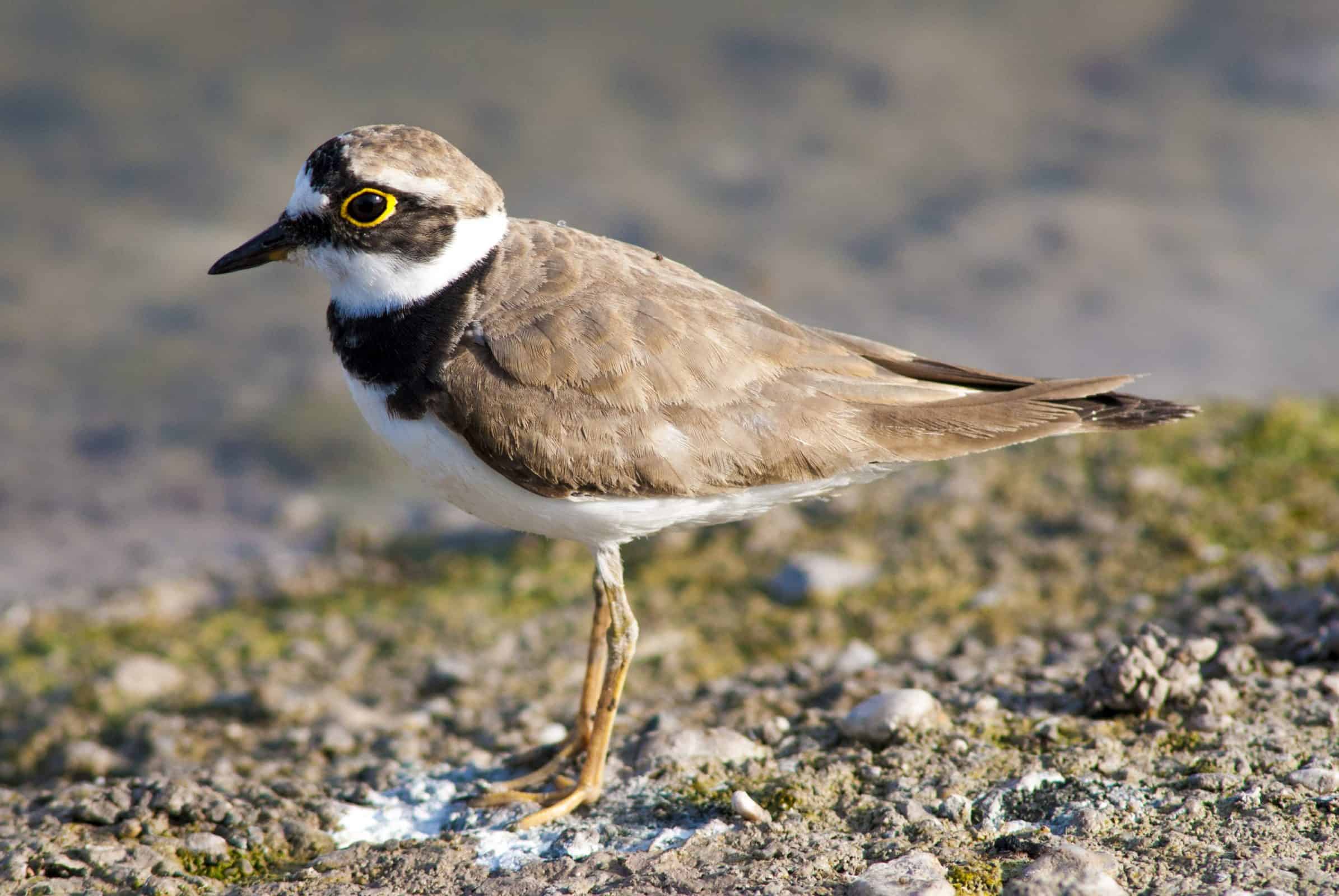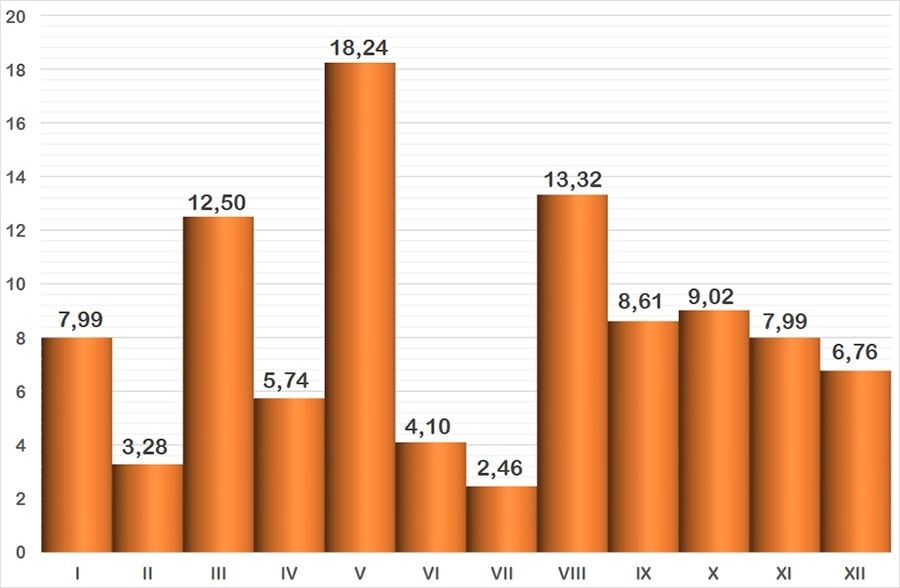Like many waders, it has different plumages for winter and summer and a slight difference between sexes. It can be confused with the common ringed plover, from which it differs among other aspects in its complexion, the little ringed plover is, as its name indicates, smaller, has a slimmer appearance, with longer legs with the posterior end of its silhouette more elongated and in flight it lacks the wing stripe which is characteristic of the former. In summer the male has an incomplete (open at the nape) but well defined, black collar on the white of the body, breast, neck and head, the beak is shorter compared to the ringed plover and is dark in colour. It has a black mask that is completed with a black stripe also on the forehead in which a yellow eye ring stands out. On its head, in the form of a crest or cap, the plumage is the same brownish colour as its back. Its legs are pale flesh coloured. The female has the same pattern on the head, but it is more subdued and browner. In winter, the entire head pattern is blurred, and what was black in summer becomes brownish. The legs also change at this time, becoming a greyish, pinkish-brown.

Species 1
Little Ringed Plover
Scientific name
Family 2
Taxonomic Affinity Group 3
Phenology 4
It is present throughout the year, unlike in the rest of the Iberian Peninsula, during the winter it remains regularly until the prenuptial passage, with fluctuations, with a marked increase in May, which will not recover until August, already with the postnuptial passage, when it will remain over winter again.

The graph represents the probability of seeing a species during the year, grouped into months. The vertical axis indicates the percentage value. Each of the bars expresses its value. The horizontal axis represents the months: I = January, II = February, III = March, IV = April, V = May, VI = June, VII = July, VIII = August, IX = September, X = October, XI = November and XII = December.
Observation recommendations
It can easily be seen on the excursions proposed, especially in the ‘Salinas de Poniente’, both in the ‘Salinas Nuevas’ and in ‘Cerrillos’, where can be seen on the edges of the waterlogged areas.
Observation areas where we can find it
Notes
[1] The names used are from the list of birds of Spain, drawn up by SEO/BirdLife and updated to 2019 (https://seo.org/listaavesdeespana/). The reference is: Rouco, M., Copete, J. L., De Juana, E., Gil-Velasco, M., Lorenzo, J. A., Martín, M., Milá, B., Molina, B. & Santos, D. M. 2019. Checklist of the birds of Spain. 2019 edition. SEO/BirdLife. Madrid.
[2] The taxonomic family to which it belongs is indicated.
[3] Traditionally, waterbirds have been grouped according to their taxonomy or “taxonomic affinity”, i.e., when some birds coincide in certain features that allow them to be classified scientifically, but without leaving the rigour of science, they are put together in these groups so that they can be easily recognised. These groups are the following: Greves (belonging to the Podicipedae family), Herons and Similar (includes the families: Ardeidae -Herons- Ciconiidae -Storks- and Threskiornithidae -Ibises and spoonbills-), Ducks (the whole Anatidae family), Coots and Similar (the family Rallidae corresponding to Rails, Gallinules and Coots), Cranes (also with only one family, the Gruidae), Waders , a heterogeneous group, the most diverse of this classification, includes the families Burhinidae (Stone-curlews), Haematopodidae (Oystercather), Recurvirostridade (Avocets and Stilts), Glareolidae (Pranticole), Charadriidadea (Plovers), Scolapacidae and finally Gulls and Similar (the recently unified family Laridae, i.e. Gulls and Terns).
[4] Phenology studies the relationship between the cycles of living beings and meteorological factors, and in our latitude these factors manifest themselves as variations throughout the year, thus relating the seasons to the birds’ cycles (breeding, migratory journeys, etc.) The graph shows the probability of seeing a bird depending on the month. It uses data from 48 bird censuses carried out between October 2016 and September 2018. The method used is that of a census route with sampling stations, with a total count on the sheet of water.
